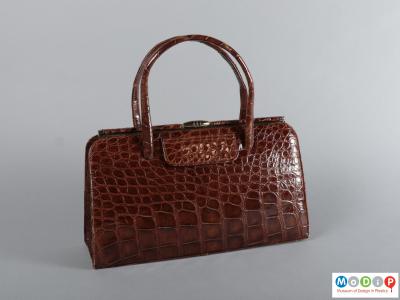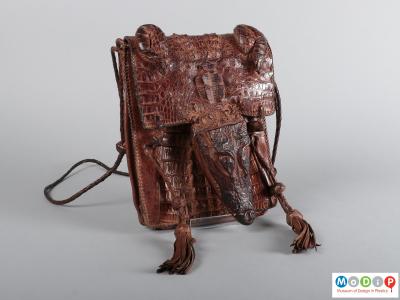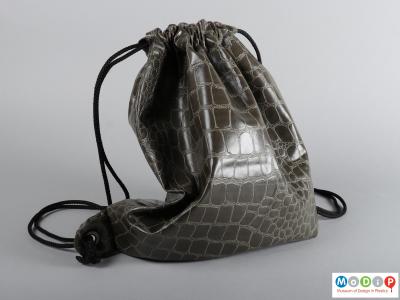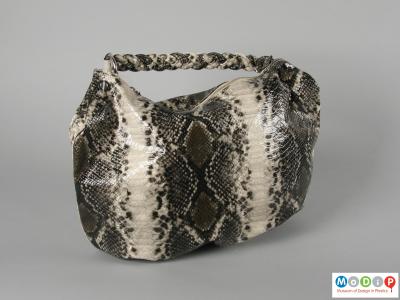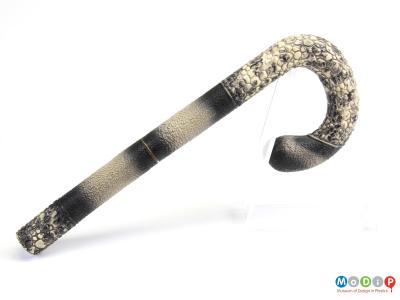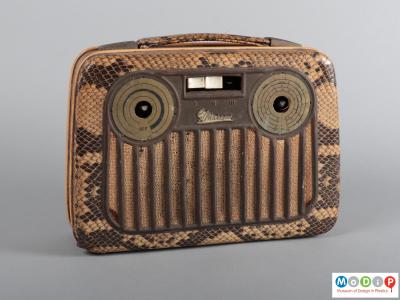The skins of crocodiles, snakes and lizards have been used for centuries to make luxury items such as luggage, belts, shoes and bags, and they continue to be popular for their texture and pattern. Sadly, although there are controls for the sale of farmed skins, there are still those who trade illegally in animals taken from the wild. The relative rarity of snakeskins, and the small sizes of some, make goods difficult to construct, and their delicate nature means that they require a high level of skill to work them, adding to their high value. With age the snakeskin scales tend to lift which, for some, is an undesirable characteristic, and as fashions and ethical sensitivities change, synthetic alternatives have become a more acceptable, practical, and affordable alternative.
Processing crocodile skins can result in a product that is sufficiently removed from the reality of its origins that objects such as ‘The Martin’ handbag (1) from the 1950s, sold with a ‘Genuine crocodile’ swing tag, became highly desirable and fashionable status symbols. On the other hand, the bag with the head and feet of the animal still attached (2) could be regarded as distasteful.
The mock-croc polyvinyl chloride (PVC) drawstring bag (3) offers an alternative material and a way of responding to fast changing fashion trends in a more accessible and considerate way.
Sophisticated printing and embossing production techniques provide realistic fabrics from which to make items such as the polyurethane (PU) snakeskin effect Marks & Spencer handbag (4). These techniques can also be used to give an appearance of luxury to everyday objects. For example, the umbrella handle (5) with a mock lizard skin from the 1920s is moulded from thermoformed cellulose nitrate on a wooden armature, and the 1950s Pinguin K55 portable radio (6) has a wooden cabinet with a synthetic snake skin effect covering.

